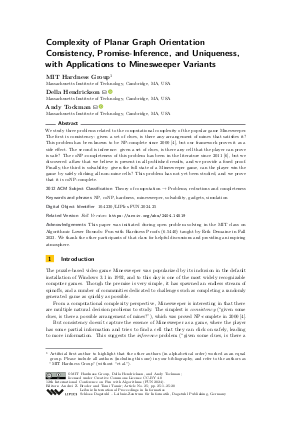LIPIcs.FUN.2024.25.pdf
- Filesize: 0.8 MB
- 20 pages

 Creative Commons Attribution 4.0 International license
Creative Commons Attribution 4.0 International license

We study three problems related to the computational complexity of the popular game Minesweeper. The first is consistency: given a set of clues, is there any arrangement of mines that satisfies it? This problem has been known to be NP-complete since 2000 [Kaye, 2000], but our framework proves it as a side effect. The second is inference: given a set of clues, is there any cell that the player can prove is safe? The coNP-completeness of this problem has been in the literature since 2011 [Scott et al., 2011], but we discovered a flaw that we believe is present in all published results, and we provide a fixed proof. Finally, the third is solvability: given the full state of a Minesweeper game, can the player win the game by safely clicking all non-mine cells? This problem has not yet been studied, and we prove that it is coNP-complete.





Feedback for Dagstuhl Publishing